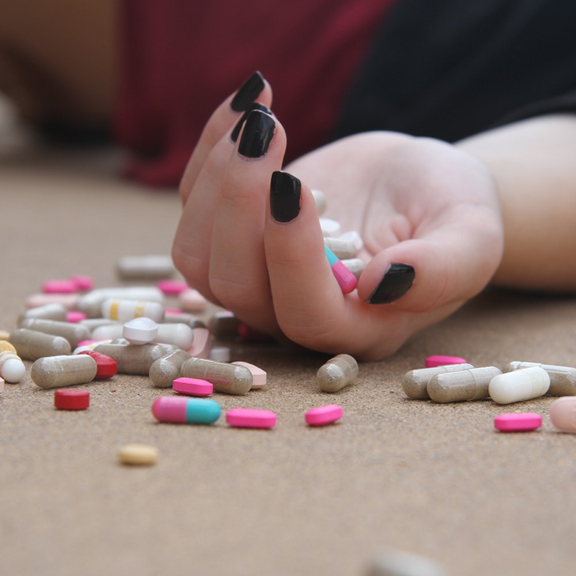
 According to the Centers for Disease Control and Prevention, the rate of heroin use and over-dose has nearly quadrupled between 2002 and 2013. It’s also reported that more than 8,200 people died in 2013. Unfortunately, this statistic is on the rise since the last study and people are still abusing the drug and need help.
According to the Centers for Disease Control and Prevention, the rate of heroin use and over-dose has nearly quadrupled between 2002 and 2013. It’s also reported that more than 8,200 people died in 2013. Unfortunately, this statistic is on the rise since the last study and people are still abusing the drug and need help.
In the United States, heroin use and addiction doesn’t just affect one demographic. In fact, addiction levels are on the rise for men and women, various age groups, and nearly all income levels.
Heroin abusers need to decide- for themselves- when to cease their dependency on it. Abusers can stop on their own using online resources and a strong support system; however, the withdrawal symptoms might elicit relapse. A professional detox is the most successful way to rid an abuser’s body of the drug.
The more you, the heroin abuser, and your family know about supervised detox programs the greater success you’ll have.
You can understand how the program runs and what effort is needed on your part. Family and friends can recognize what you’re going through and learn how to be supportive every step of the way.
A supervised detox offers a safe and sure way for you to rid your body of the drug and toxic influences in a medical environment. This also reduces the risk of complications, if they occur. For some patients, their detox program may necessitate medication.
If you complete the program with absolute determination and purpose, you and your family will see immense progress.
For all who are involved in this journey: Outlined below are the five things you should know about a supervised detox program and how to continue progressing after.
At the first stage, doctors will give you a medical assessment. This is used to calculate your heroin use-level and help design a detox program and treatment plan for you.
You can expect questions similar to the ones listed below:
As part of the assessment, you will also be given a physical exam to thoroughly determine your health condition. Your medical history will also be used with your written and physical assessment to create the best treatment plan for you.
Therefore, it is absolutely imperative to be honest on your assessment.
The next stage of the detox treatment is going through withdrawal. The intensity of the symptoms depends on how heavily you used heroin.
Withdrawal symptoms include:
When your body has been under the influence for long-periods of time, it’s not uncommon for it to malfunction. The endocrine system could misjudge normal experiences such a pleasure and pain and exaggerate them.
The fear of experiencing withdrawal symptoms deters many abusers from stopping. In a supervised detox program, the staff helps ease your symptoms and manage your cravings.
In these facilities, where resources and support are readily available, you have a higher probability of completing the program, and moving on to treatment. Supervised detox also reduces the chance of relapse and overdose in a safe and comfortable environment.
In the third stage, the staff administers the supervised detox treatment plan, which is based on your assessment.
Sometimes, your treatment plan includes medications which control your cravings and withdrawal symptoms.
The medications may include the following:
The medication’s aim is to free your body of heroin and any of the drug’s impacts on your body. This is accomplished over time and on a decreased schedule. The timing depends on your history with the drug and withdrawal symptoms intensity.
You have the option to elect for a treatment that doesn’t involve any pharmaceuticals. This is often referred as “social” detox.
This treatment often takes place in residential or inpatient facilities. The benefit is that you’d be in an atmosphere that supports and fosters your goal. You’ll be around people who have the same aspirations as you and can encourage you.
You’ll have support from not only your therapists but also your peers. If you do need it, there is medication available. Unlike the medicated detox program, this one uses natural medications to lessen your withdrawal symptoms.
Your journey is not over once you’ve completed your detox. The detox merely clears your system of the drug and its impression on you. After the detox and withdrawal symptoms have ceased, you can focus on treating your addiction habits.
Behavioral therapy is the most common way to treat heroin addiction. These sessions concentrate on the core causes of your substance abuse and cravings during and after treatment.
This is a great phase for your family to be involved in. Therapists can advise them about how to best support your progression and help you adjust to life at home.
The type of behavioral therapy offered depends on the treatment center and its philosophy, any present psychiatric disorders, and your preferences. Generally, there are three types of therapies available:
There is still a wealth of resources available if you cannot participate in behavioral therapy or need support after.
Online resources helped former addicts further their progression and avoid relapse. The two most common are listed below:
You’ve been given all the information about how to help yourself.
Now, it’s up to you to rouse up the courage to make a change for yourself and the people around you.
If you’re committed to receiving treatment, here are a few questions to ask yourself:
If you’re ready to learn more about our treatment center and detox programs please visit our website.
